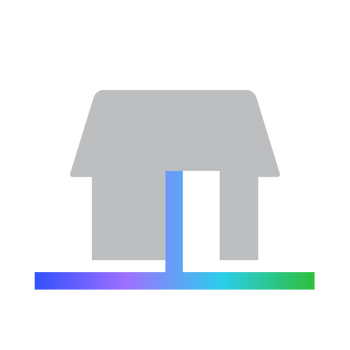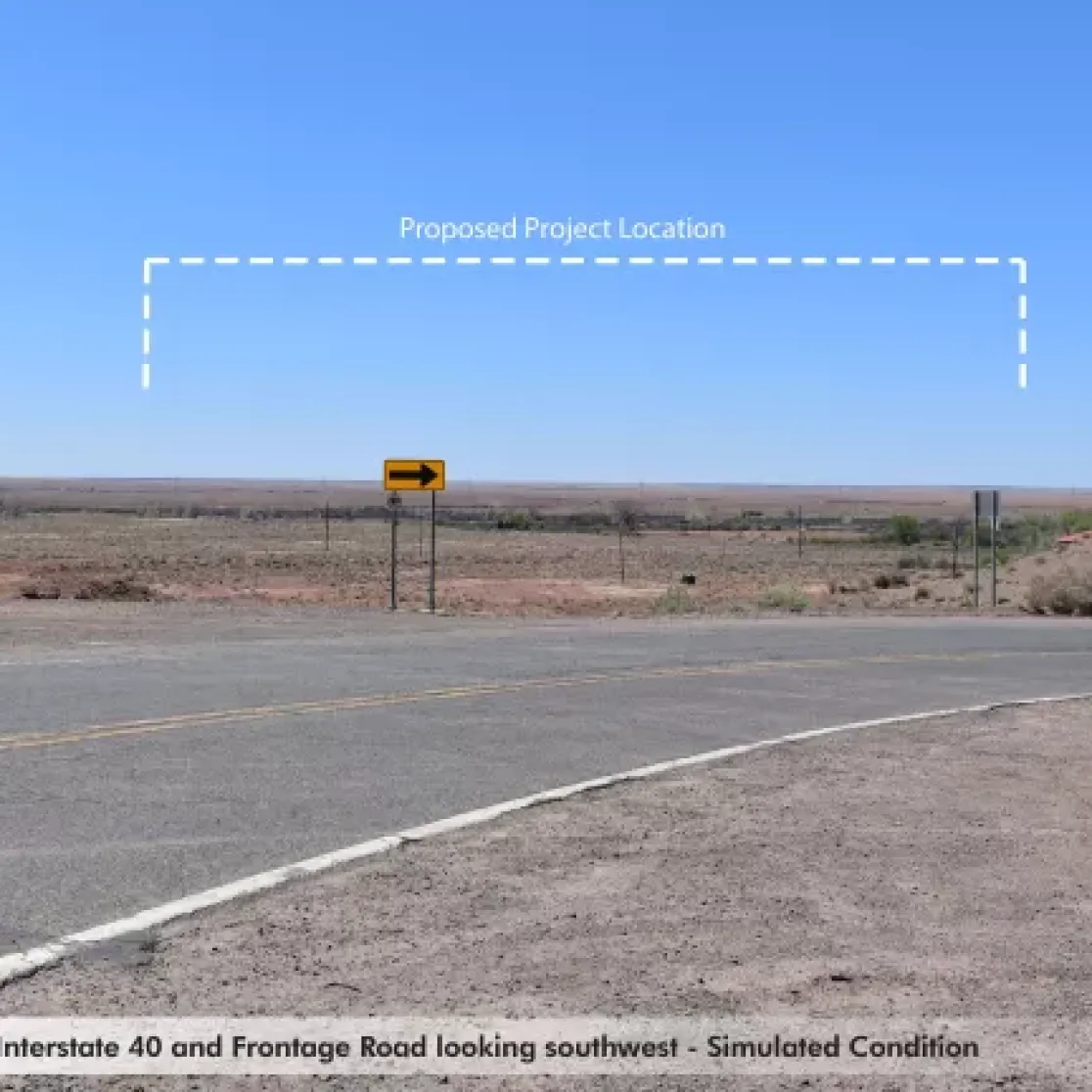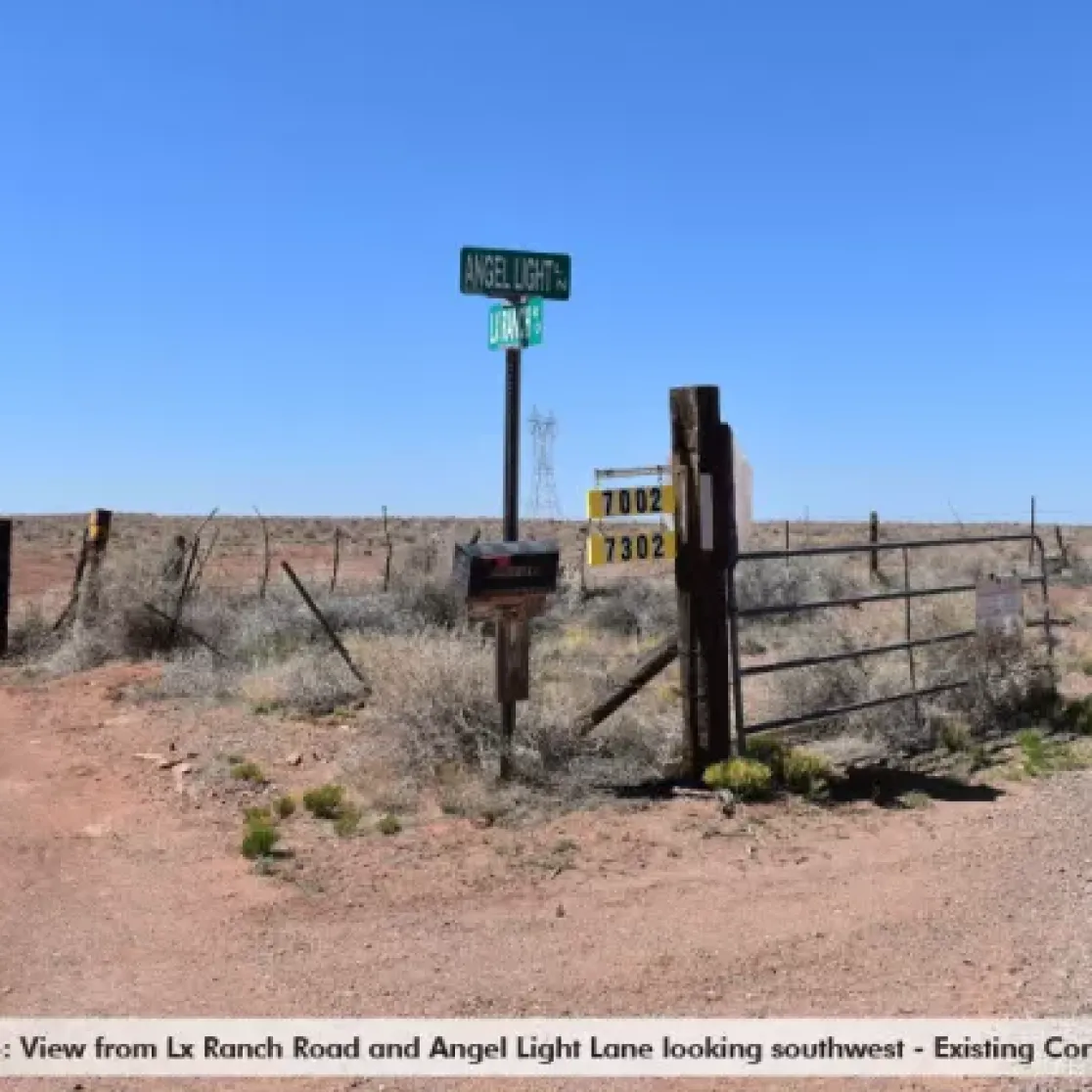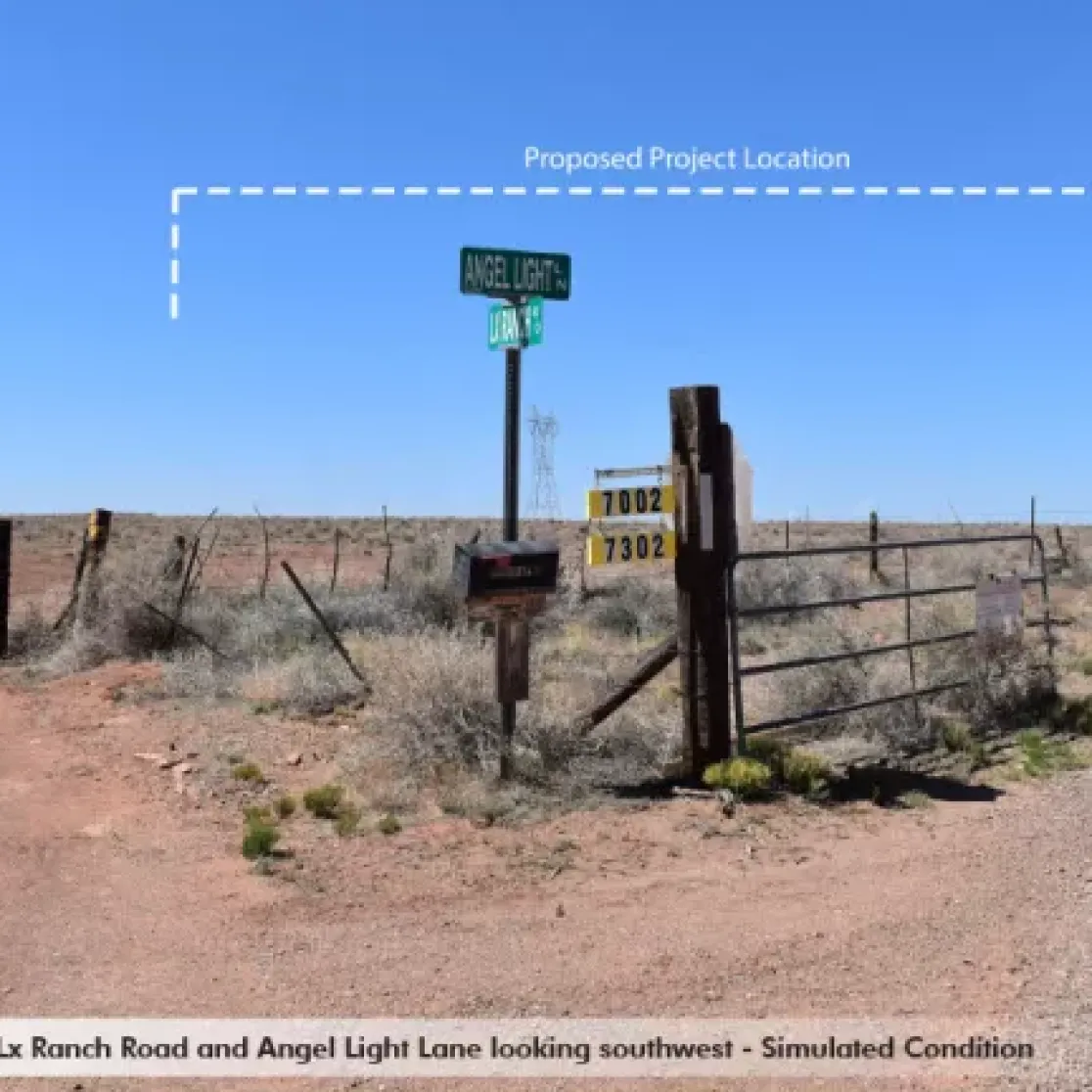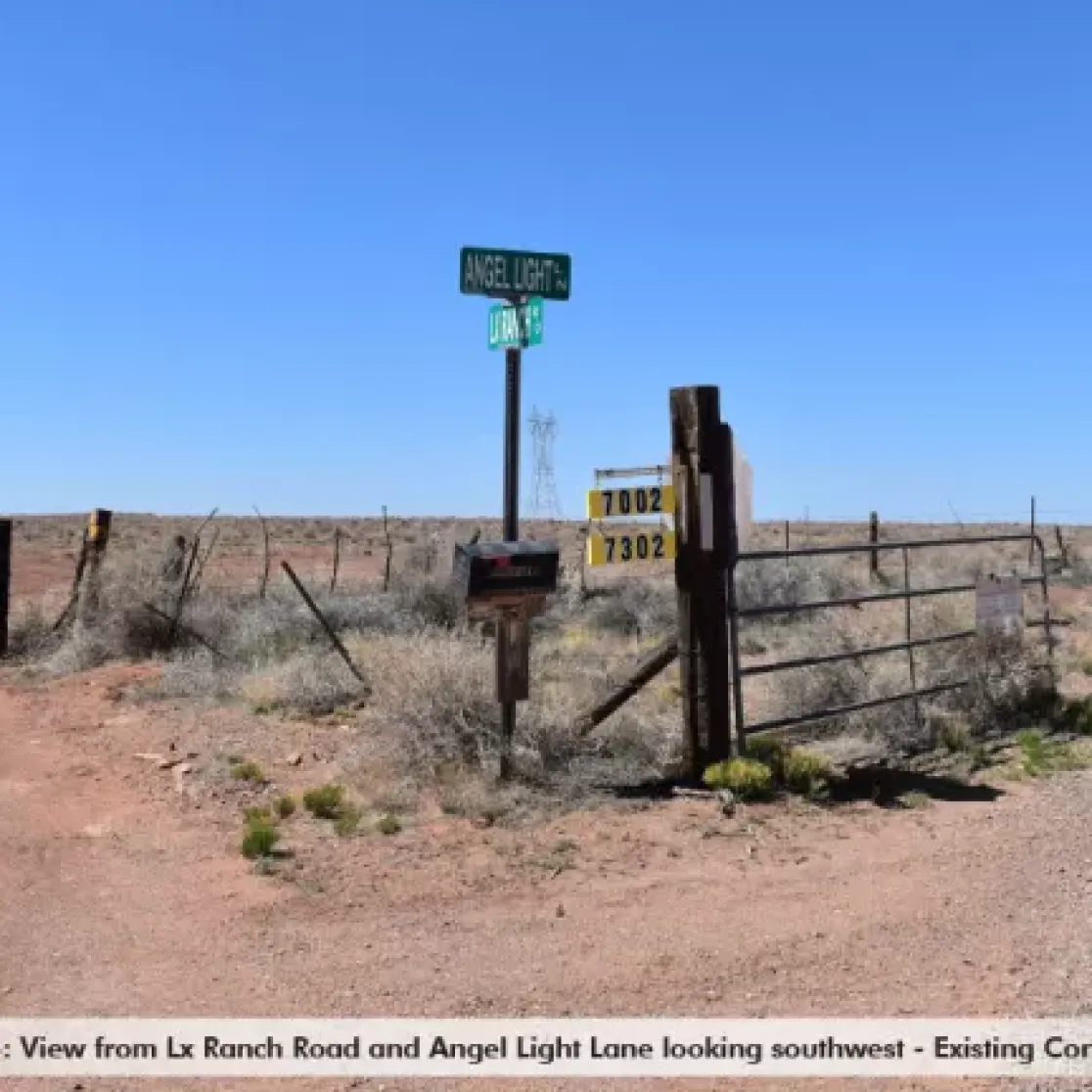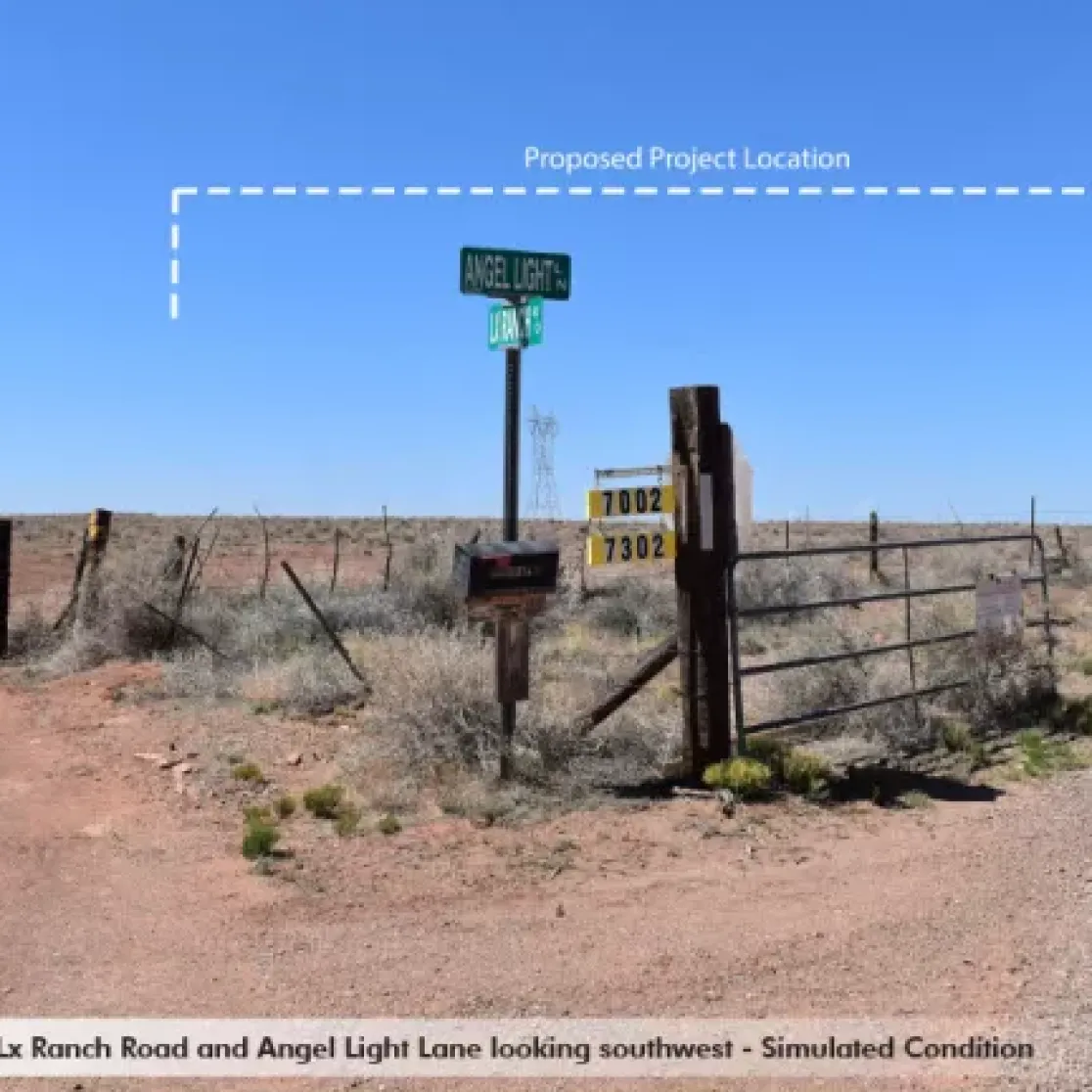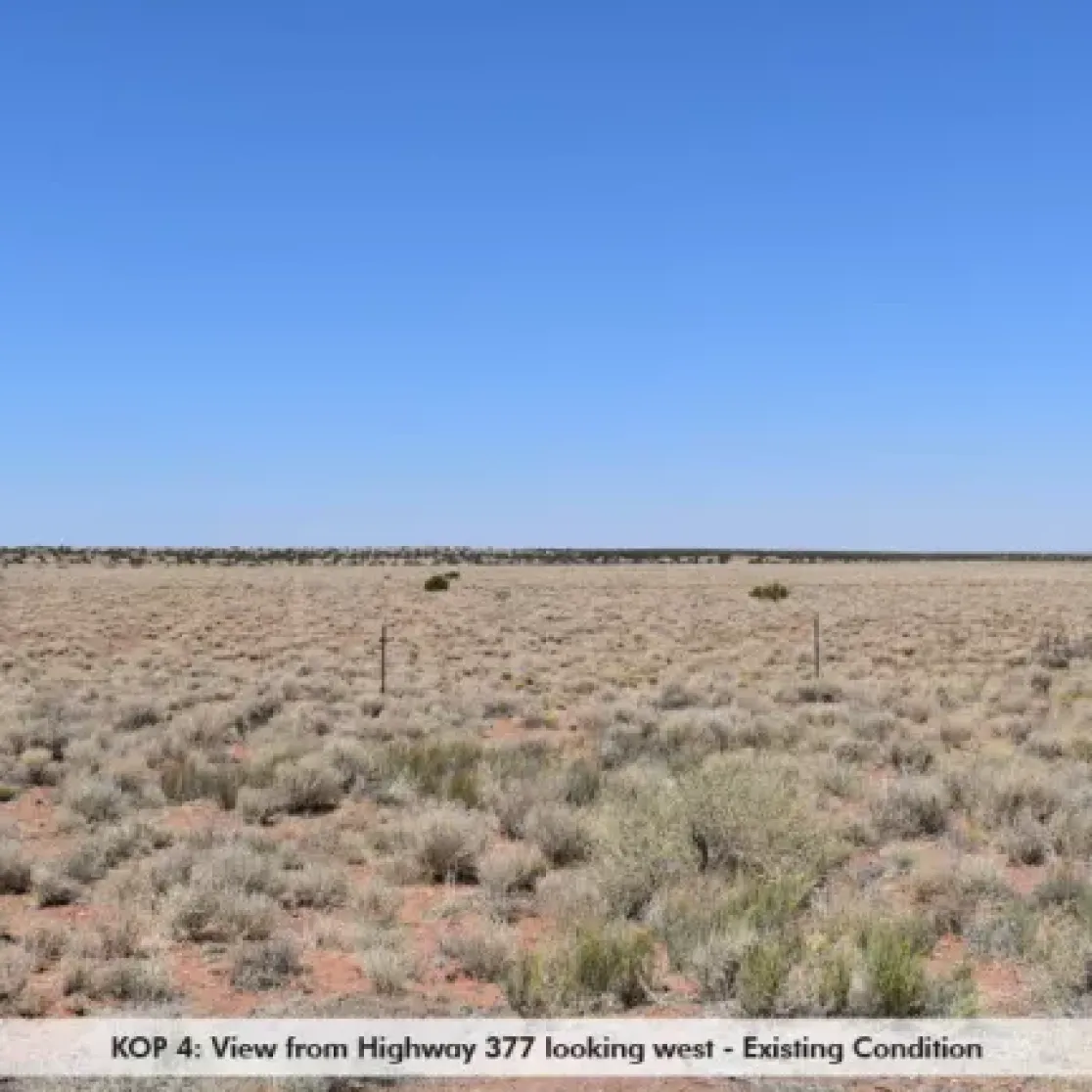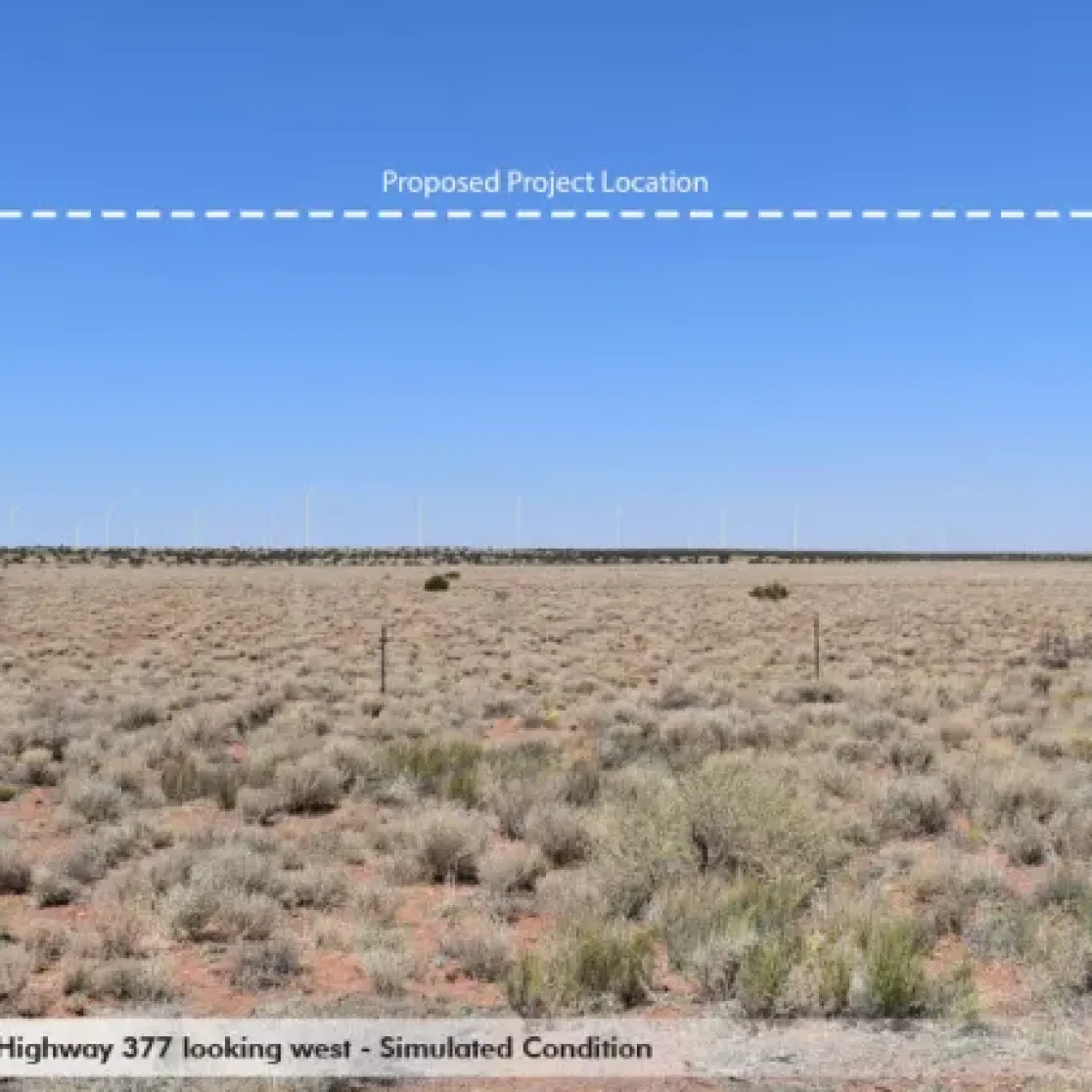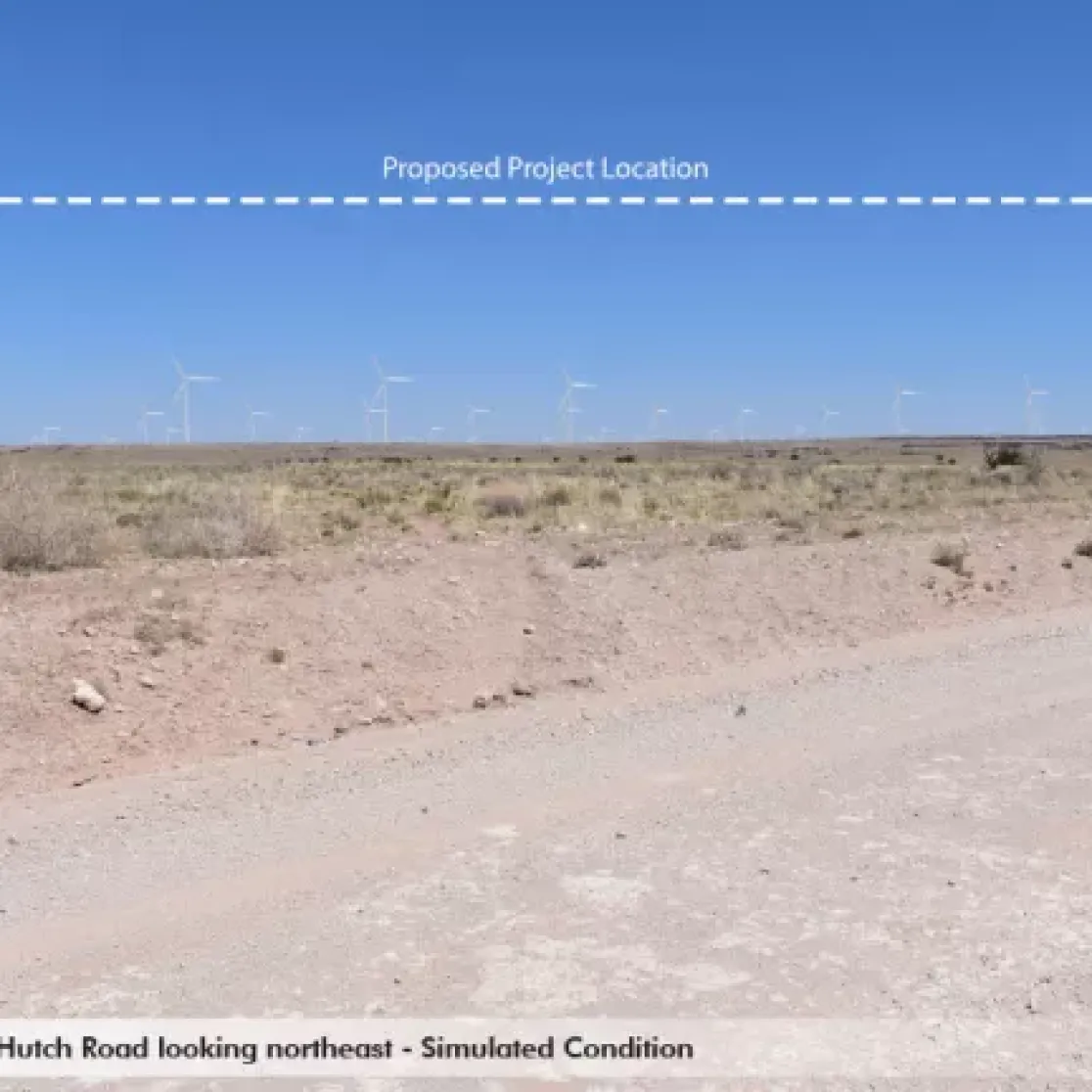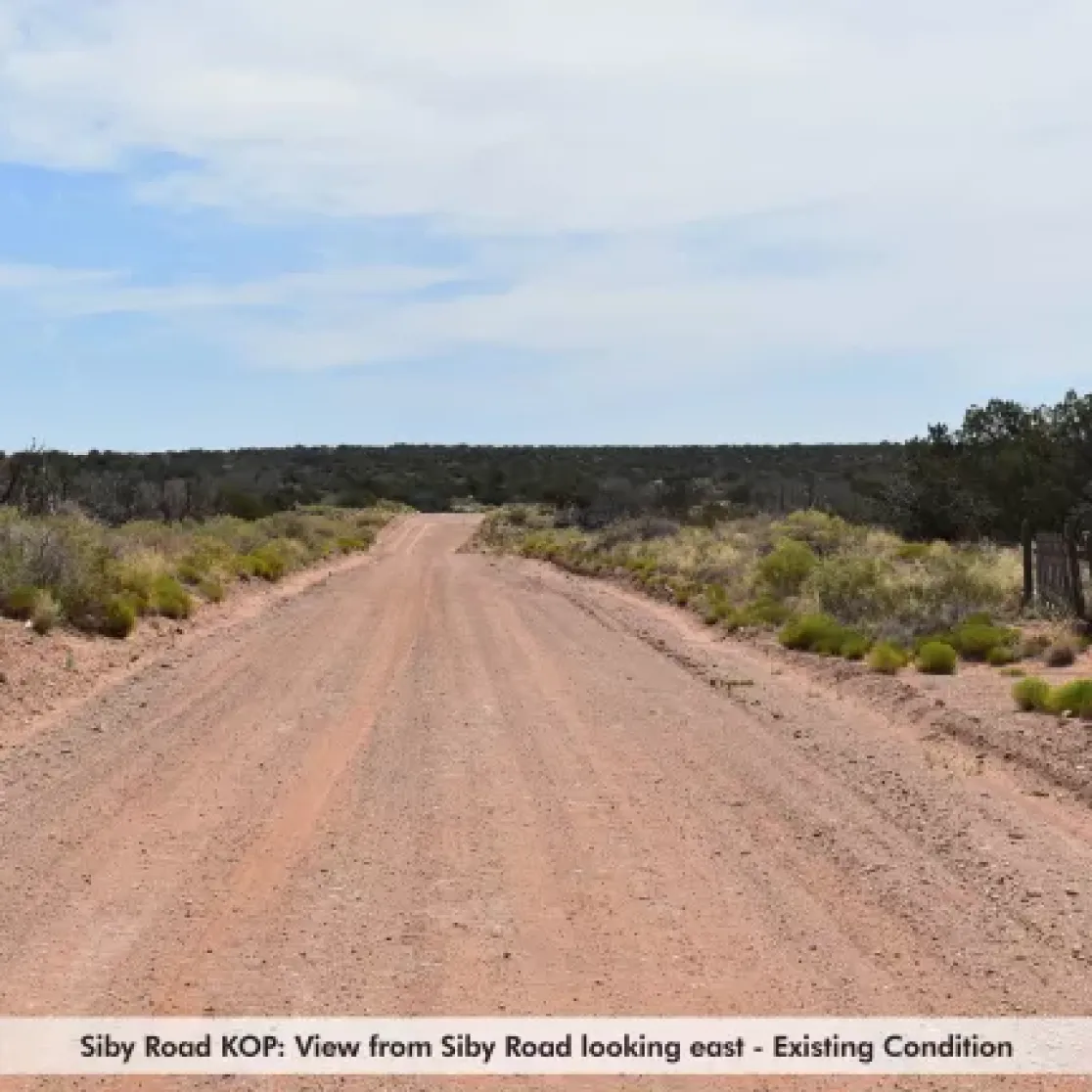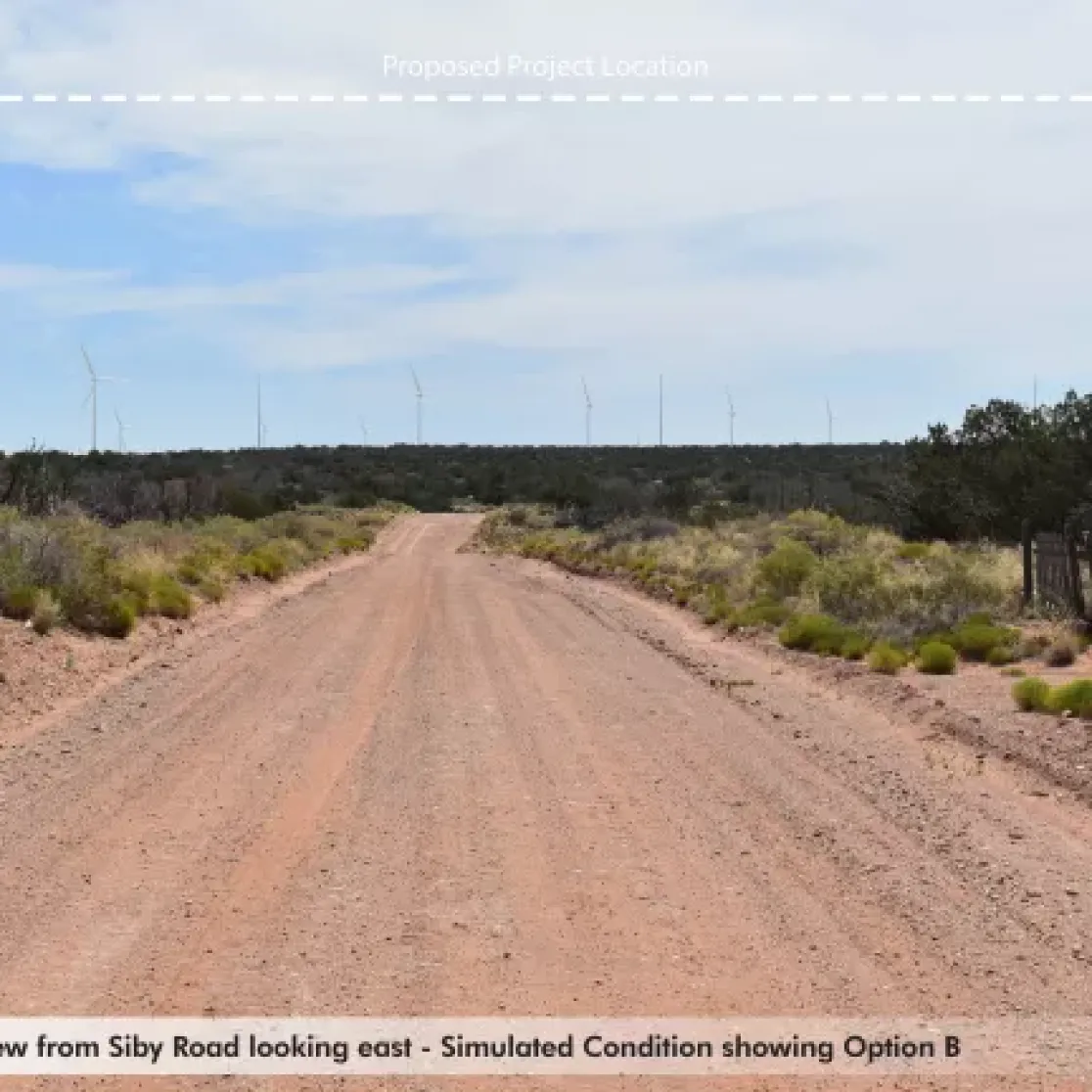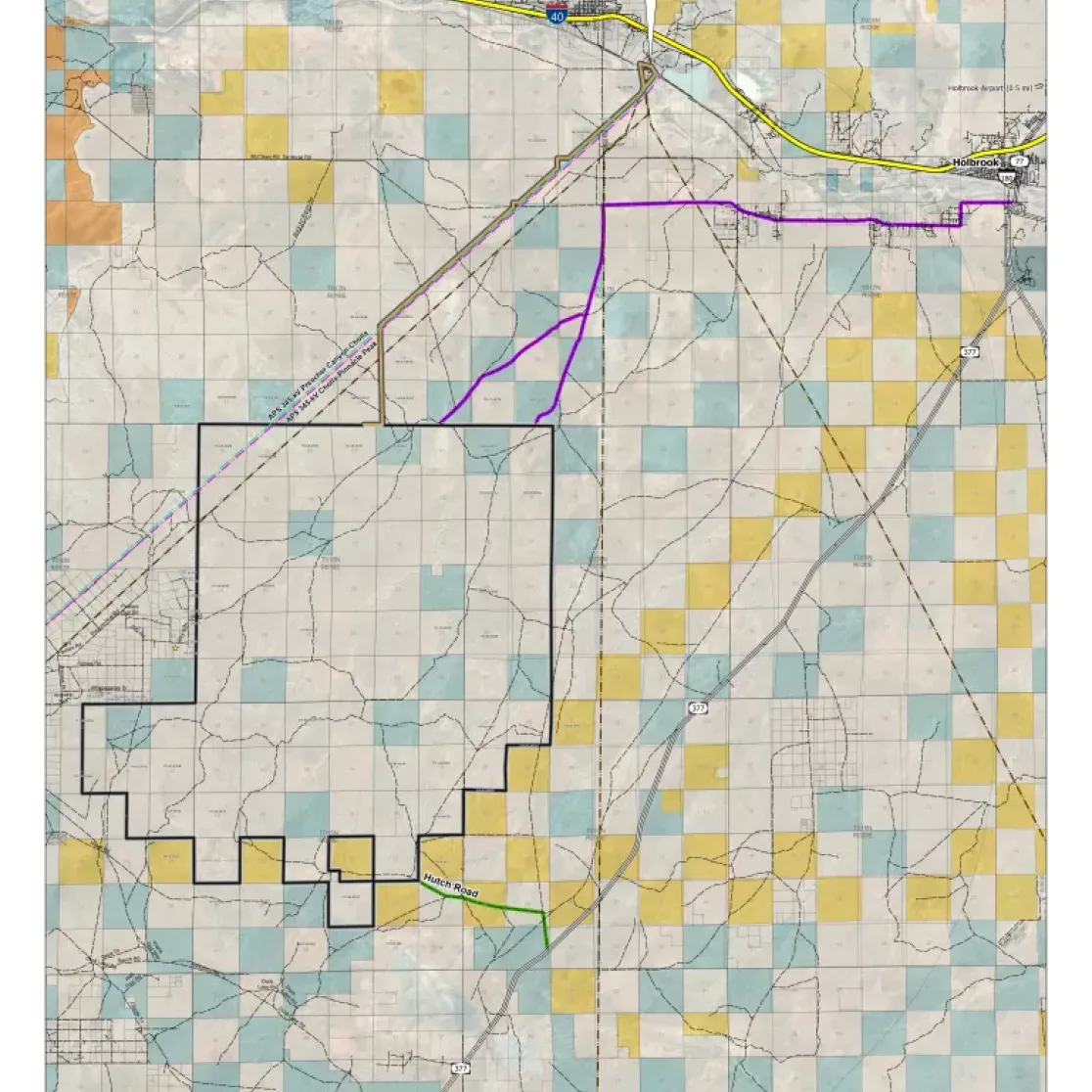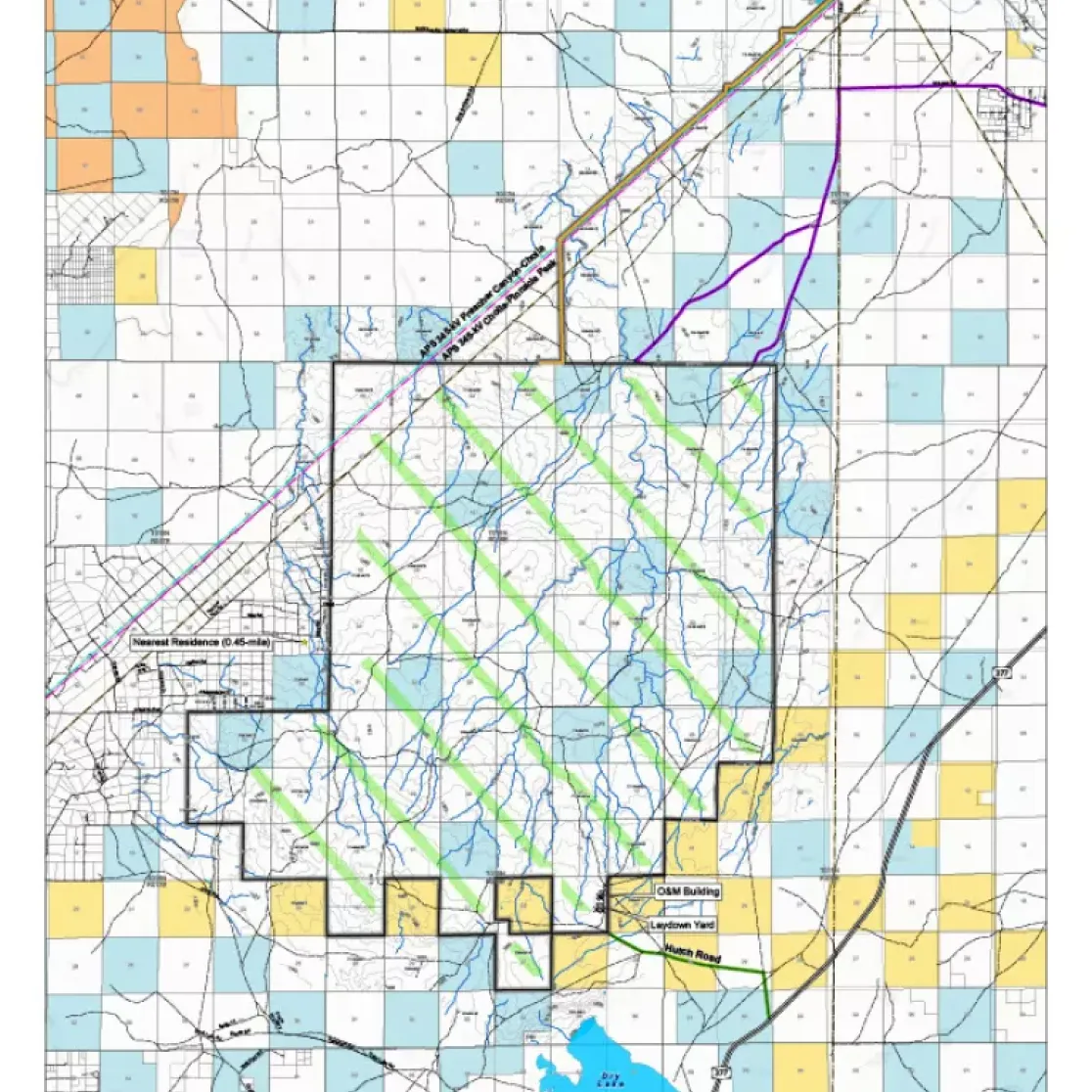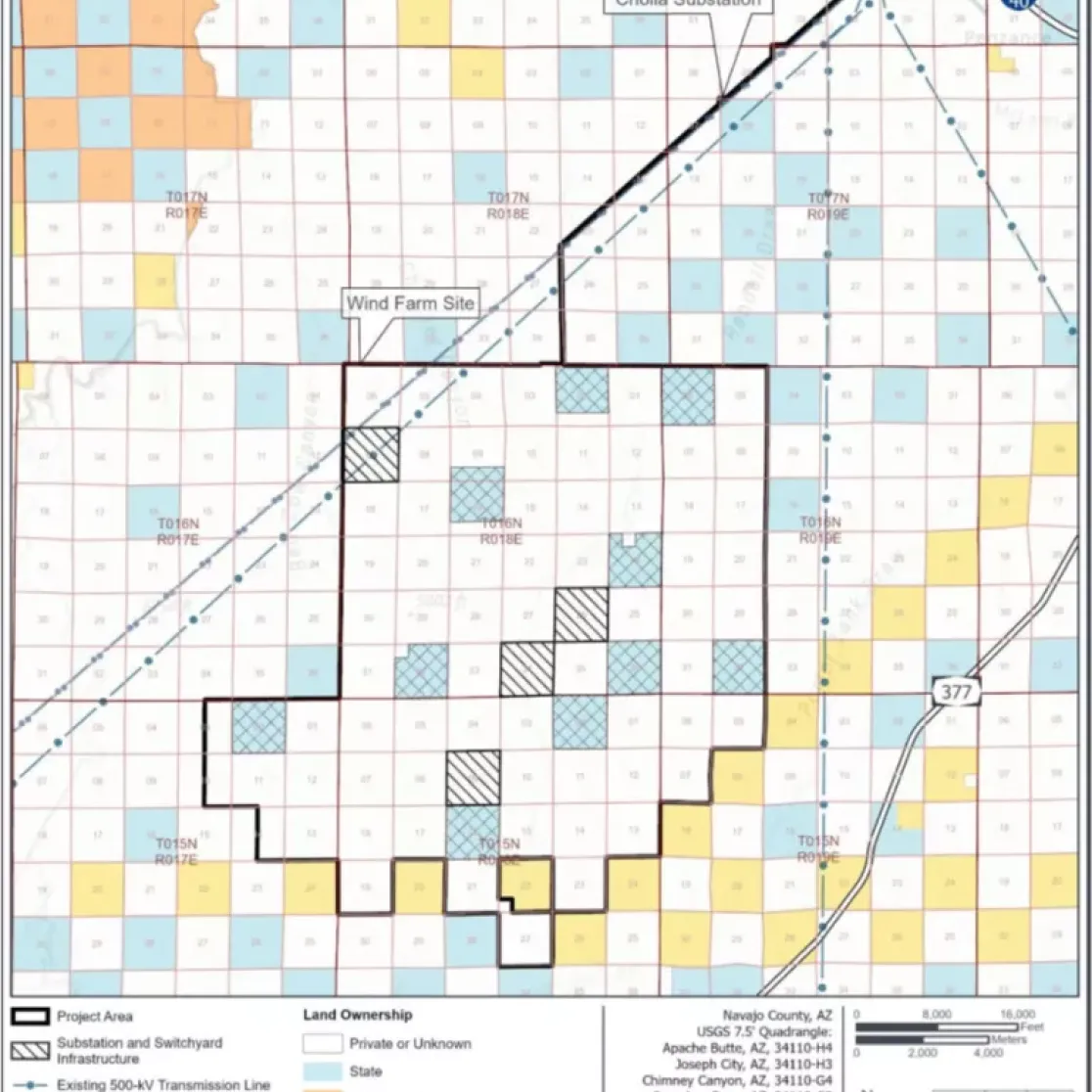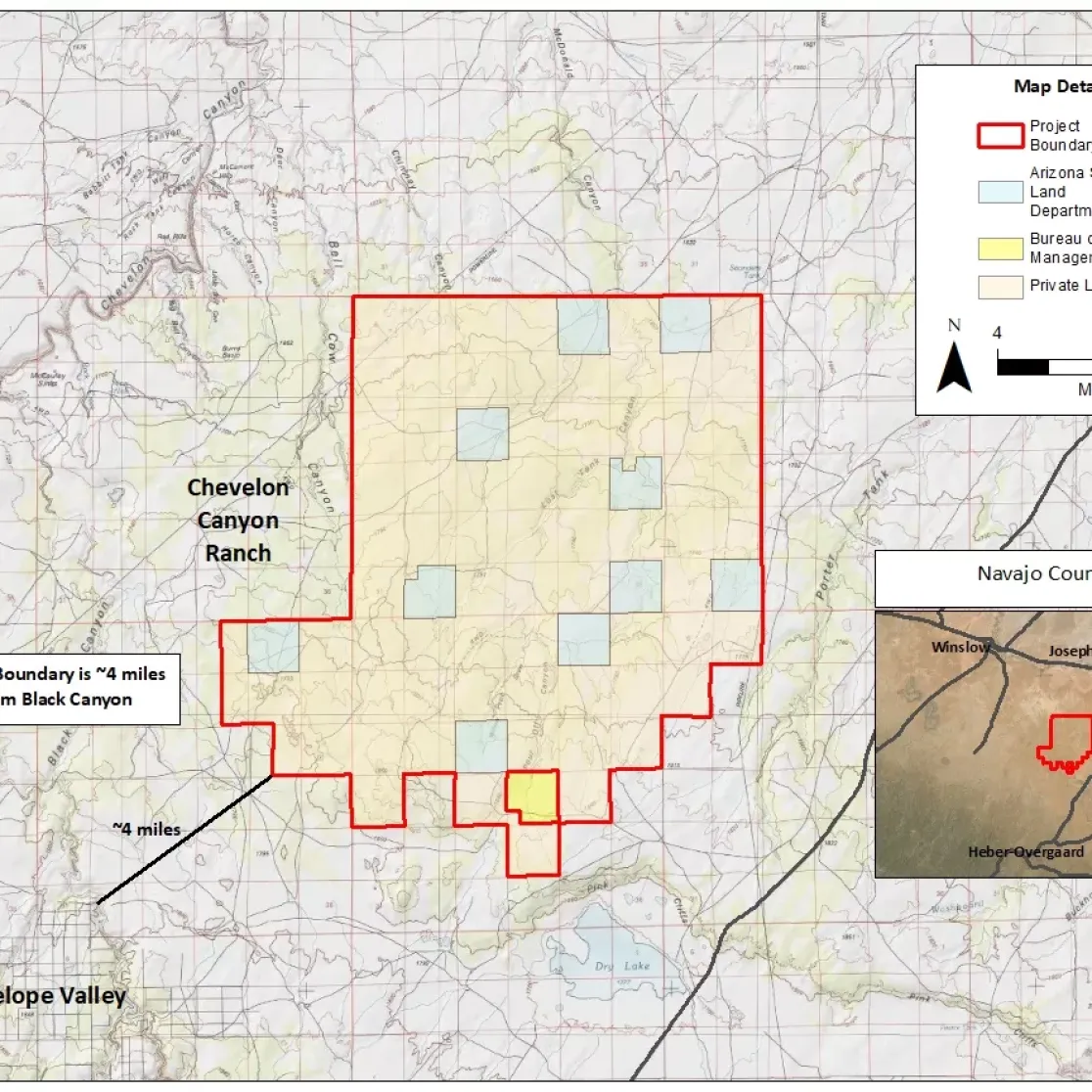WIND POWER IN ARIZONA
West Camp wind project
AES’ West Camp Wind Farm is a planned 504 MW wind energy project in Navajo County, Arizona. With approximately 112 wind turbines, the wind farm will produce cost-competitive clean energy while creating economic benefits for all Arizonans.
Since 2010, AES has been helping Arizona meet its ambitious 3 GW energy storage target, while powering economic development and ensuring the delivery of safe, reliable and clean energy to local communities.
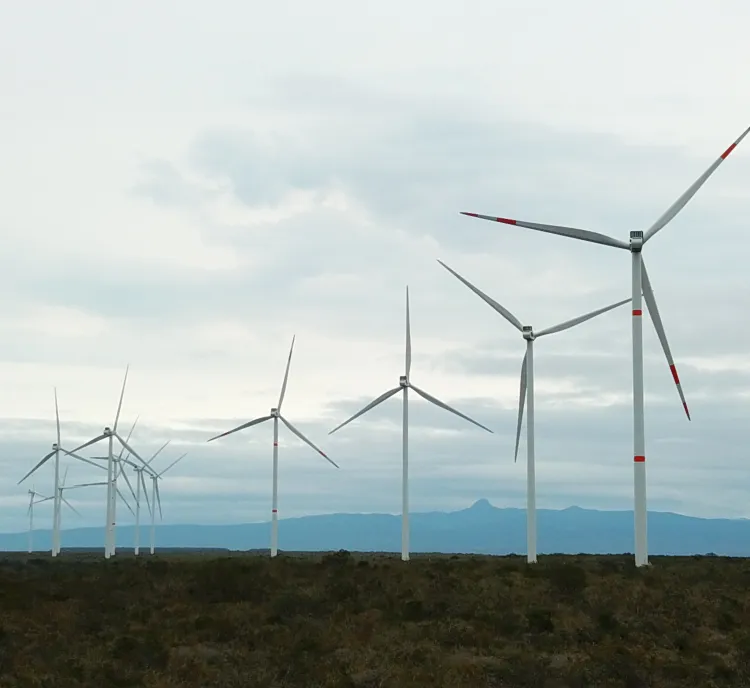
Our clean energy commitment
AES’ West Camp wind project is a planned facility in Arizona. We are committed to responsible clean energy development that creates long-term value and positive impact for both the environment and local communities.
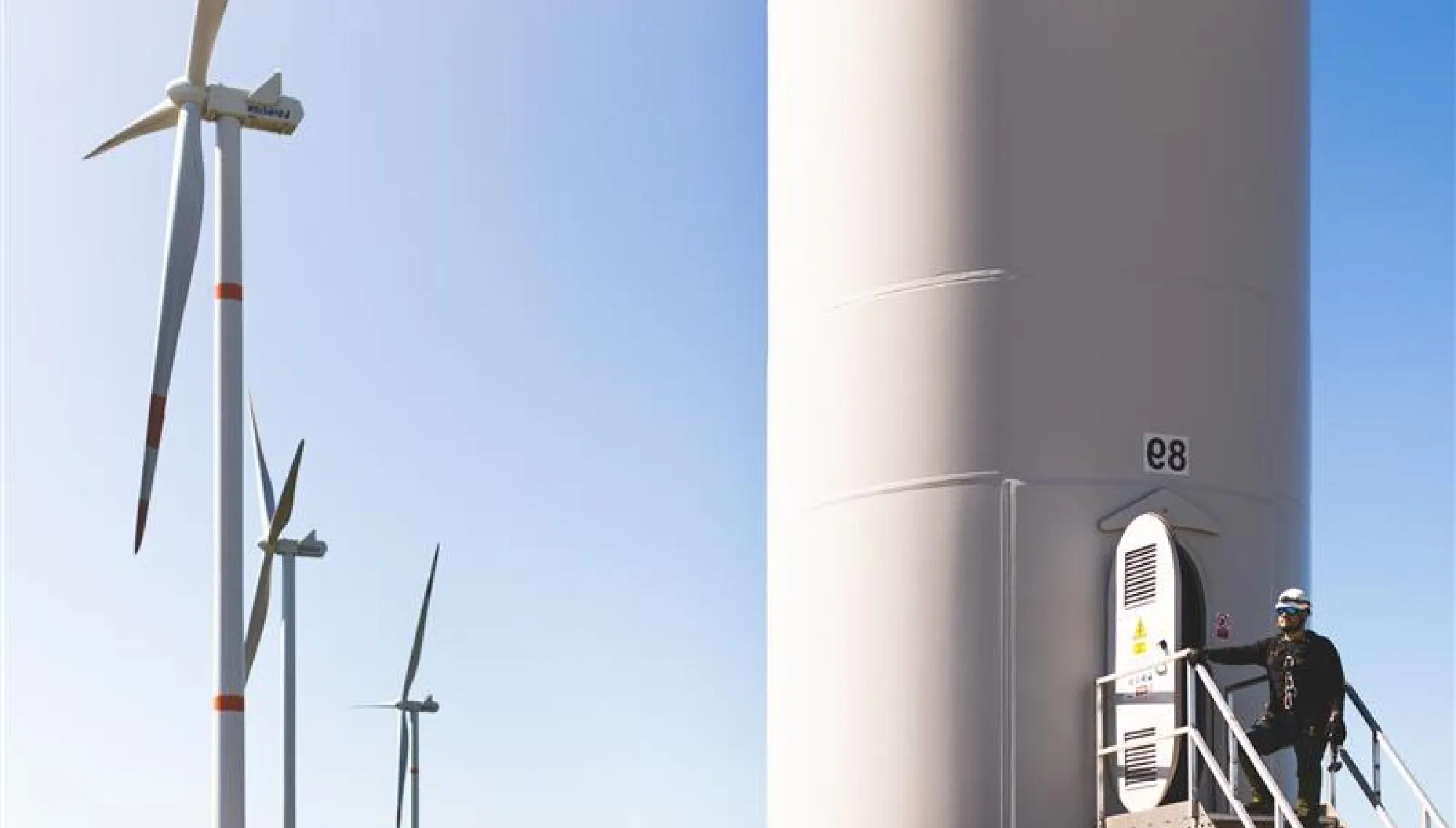
Economic and environmental benefits
We believe in being a good neighbor, ensuring responsible clean energy development that benefits both the environment and local communities without burdening existing infrastructure.
Project details
The facilities for the project will include some of the most advanced wind energy technology deployed to date in Arizona. In addition, the proposed on-site components of the project include an operations and maintenance building, up to two project substations, permanent meteorological towers, a switchyard, a high voltage project transmission line, and access roads. The site will also feature a radar-activated lighting system that enables the federally required turbine lights to turn on only when low flying aircraft are in this remote area to preserve Northern Arizona’s dark sky characteristics. Energy storage may also be included as part of the project’s high voltage infrastructure.
- Sited on approximately3 5,000 acres of majority privately owned land
- Will connect to Arizona’s electrical grid at the Cholla Power Plant, which is planned to be decommissioned
- AES will be the long-term owner and operator of the facility
- At the end of the project's life, a decommissioning plan allows for the land to return to agricultural use or other uses consistent with land-use policies at the time
Learn more about AES in Arizona here.
Clean energy benefits
local communities

Long-term tax revenue to local communities and school districts
Local economic stimulus during construction

Local economic stimulus during construction
Affordable, reliable, locally produced energy
Social impact funding to community organizations and non-profits
Project updates
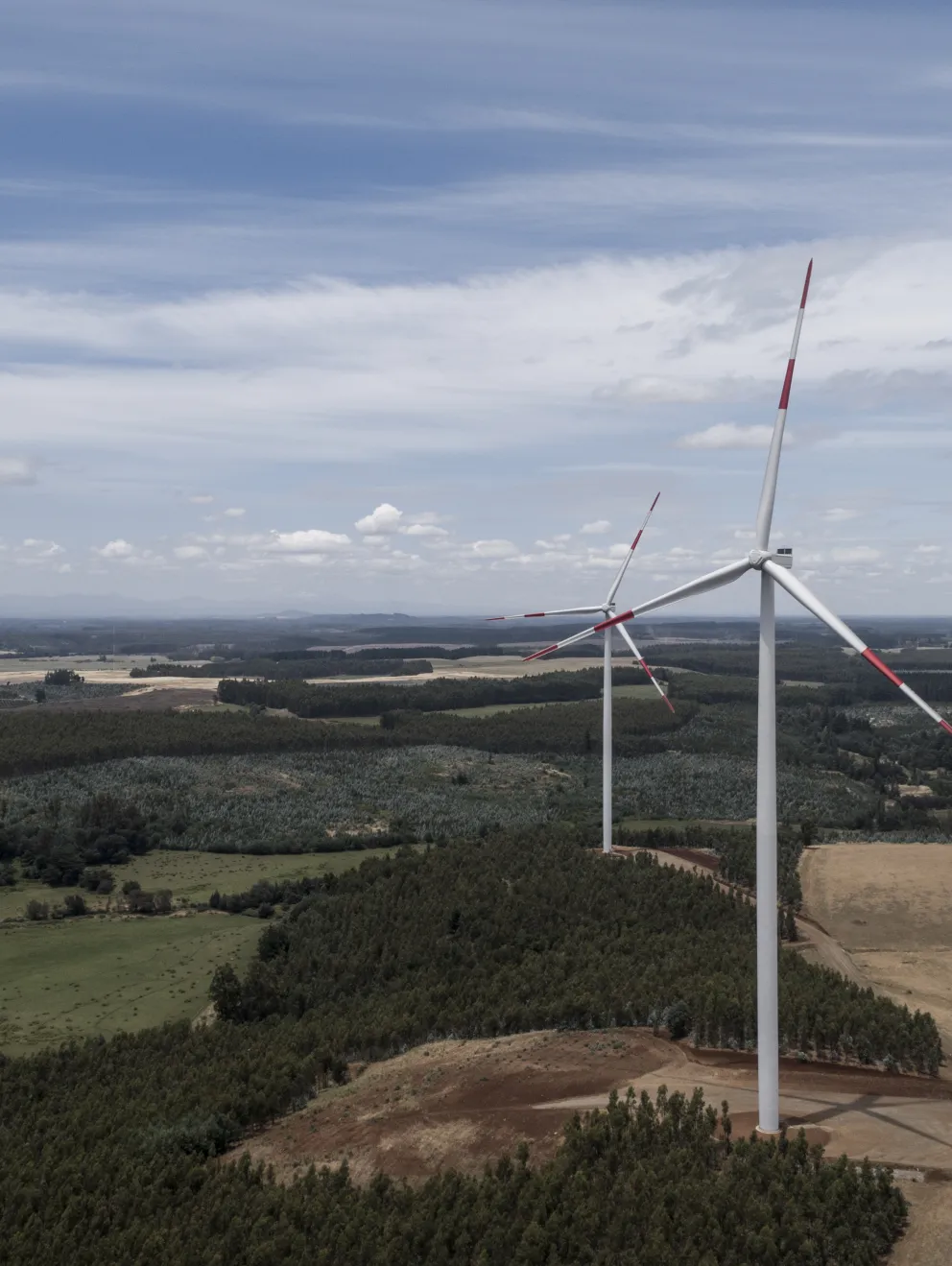
Sustainability Resources
Sustainability best practices
At AES, safety is our highest priority, and we’ve focused on improving lives for more than 40 years. As a leading innovator in energy solutions, sustainability is core to both our strategy and our culture. We are committed to responsible land use and incorporating sustainable best practices into the entire project lifecycle, contributing to building a domestic circular renewables economy and reducing foreign dependence.
Environmental and technical studies
We conduct a series of studies that ensure our projects are thoughtfully and responsibly designed. The project adheres to the U.S. Fish and Wildlife Service’s and Arizona Game and Fish Department’s wind energy wildlife guidelines to identify, avoid, minimize, and compensate for potential adverse impacts to wildlife resources thought to be at risk from wind energy development.
Local partnerships
AES is committed to being good neighbors to and a strong supporter of the Navajo County community:
• Developing renewables curriculum for Northland Pioneer College to expand students skills in growing industry
• Contribute to Watts of Love, with the commitment to enhance access to safe, affordable electricity and lighting for off-the-grid communities
• Support the Winslow Chamber of Commerce and Willow Bend Environmental Education Center
• Support the Holbrook Chamber of Commerce
• Engage with indigenous groups, recognizing indigenous groups who have a distinct and historical relationship to the land
• Partner with industry groups to provide solar workforce training programs to Arizona residents
Frequently asked questions
How much energy can West Camp produce?
West Camp can produce up to 504 megawatts of wind energy – enough to power over 360,000 homes annually. In 2021, wind power in Arizona (618 MW) saved approximately 2 billion gallons of water and avoided at least 4 million metric tons of carbon dioxide emissions.
Why are the wind turbines so tall?
A wind turbine’s ability to produce power increases significantly with height, as does its efficiency. The proposed maximum permitted height of the turbines is approximately 820 feet from the base to the tip of the rotors.
Are there health concerns associated with wind turbines?
Wind turbines have not been shown to have an adverse impact on human health. No studies have identified a direct link between turbines and long-term health impacts such as hypertension, cardiovascular disease, high blood pressure, tinnitus, headache/migraine, hearing impairment, or other diseases. Shadow flicker and noise from the turbines have not been shown to pose a health risk.
Shadow Flicker: Shadow flicker is a moving shadow created by turbine blades located between the sun and an observer. For shadow flicker to be observed, there must be a direct line of sight between an observer and the incoming shadow flicker. Sunlight and the blades must be directly facing or facing away from the sun. This means that when shadow flicker effects are observed, it’s typically for a short duration during the low angle sunlight hours, just after sunrise and just before sunset. The farther from the turbine a person is, the less noticeable the shadow flicker would be. Shadow flicker would primarily be contained within the wind farm site and the amount of potential flicker extending into adjacent areas would be short in duration and low in intensity.
Shadow flicker does not have the potential to trigger epileptic seizures as epileptic seizures are precipitated by light flashes in the range from 5 to 30 Hz. The proposed project’s wind turbine blade-pass frequency is approximately 0.59 Hz, or less than 1 alternation per second, so no negative health effects to individuals with photosensitive epilepsy are anticipated. More information is available on the Epilepsy Society website here: https://epilepsysociety.org.uk/about-epilepsy/epileptic-seizures/seizure-triggers/photosensitive-epilepsy
Noise: No scientific peer-reviewed study shows a direct link between living close to turbines, and the noise they emit (audible and inaudible), and physiological health effects. Predicted sound levels for West Camp are not expected to result in annoyance, sleep disturbance, or other health effects in the general population. West Camp is not expected to have disproportionate effects on people with autism or heightened noise sensitivity because the project’s audible noise would be low and, in most cases, imperceptible above the existing ambient noise.
How will AES mitigate the impact on the region’s endangered species populations?
The project is not located in an environmentally sensitive area. The West Camp Wind Farm will not significantly impact threatened or endangered species in the area. AES conducted eagle and raptor studies in the region to understand the habits of raptors. AES has committed to prescriptive setbacks from elevated eagle and raptor use areas to reduce avian collision risk. Additionally, the facility will be designed to limit perching and nesting on structures.
How will visual impacts affect neighboring communities?
Tall wind turbines often need lights installed on them to ensure that low-flying aircraft do not strike them. This can change the night sky landscape. To mitigate this impact, West Camp will use an advanced radar-activated lighting system that only activates when low-flying aircraft are sensed in the project area.
How does West Camp contribute to local job growth?
At full buildout, West Camp will require 500+ total construction jobs during the estimated year of peak construction.
West Camp will also employ 14-18 full-time local staff to operate and maintain the wind farm including an experienced site manager and wind BOP engineer, as well as wind technicians. We will also employ local companies for support activities, such as electrical, mechanical, material, sourcing, concrete, landscaping, and environmental monitoring.
Does the facility cause any pollution?
No. Power generated by wind turbines does not produce any greenhouse gas emissions.
What happens at the end of a wind farm’s useful life?
The anticipated life of the project is 30 years. Prior to expiration of this agreement, AES will evaluate whether to continue operation of the West Camp Wind Farm or to decommission it. Should the period of the project’s operation be extended, the appropriate agreements will be obtained, which may include upgrading or repowering the facility. If the project is decommissioned, the power generation equipment will be removed, and the site restored to pre-existing conditions.
How does severe weather affect turbine operations?
The wind turbines are designed to withstand hurricane force winds and other severe weather such as a lightning strike. When unusual weather events occur, the wind turbines automatically curtail operations.
How does wind power work?
The large propeller-like blades of a turbine are designed to capture the kinetic energy of the wind. When the turbine blades begin moving, they spin a shaft that leads from the hub of the rotor to a generator, which turns that rotational energy into electricity.
Does AES plan to develop other Arizona renewable energy projects?
AES Clean Energy plans to continue to develop wind, solar, and energy storage projects in Arizona, and is committed to being a dependable, long-term corporate partner and good neighbor in all development projects.
Contact us
We appreciate your interest in AES’ West Camp Wind Project. Please contact us using the information below.


